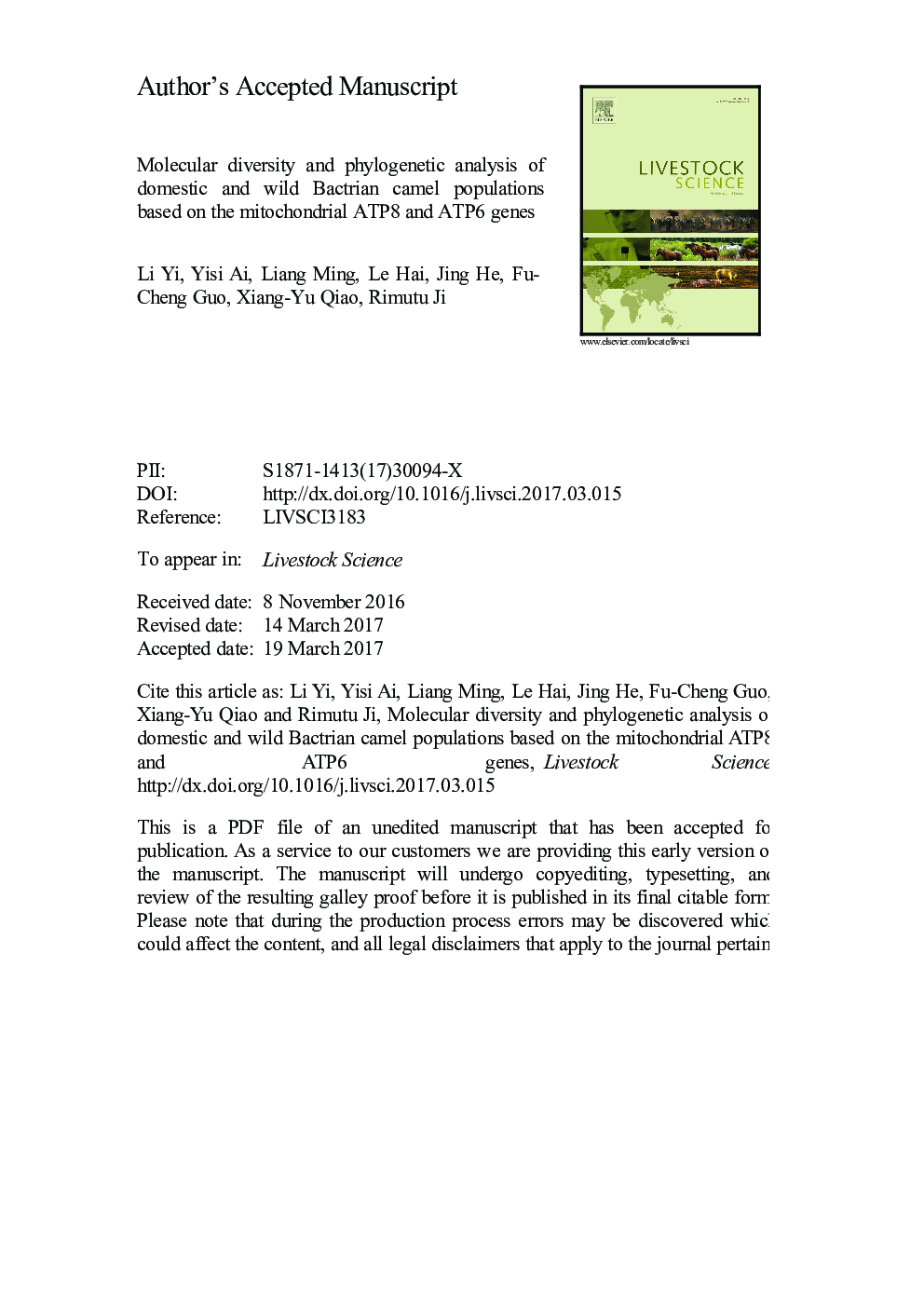| Article ID | Journal | Published Year | Pages | File Type |
|---|---|---|---|---|
| 5543016 | Livestock Science | 2017 | 13 Pages |
Abstract
In this study, we investigated the genetic diversity of 126 samples representing 14 Bactrian camel populations from different localities using the mitochondrial ATP8 and ATP6 genes. A total of 842Â bp of the complete ATP8/6 sequences of all Bactrian camel samples were amplified by polymerase chain reaction (PCR) and sequenced. The ATP8/6 sequences were analyzed by MEGA6.0 and DnaSP v5.10, and the function of nucleotide substitutions was predicted by PolyPhen2 and Sorting Intolerant From Tolerant (SIFT) programs. The haplotype network and phylogenetic tree were constructed by Network 5.0 and MEGA6.0, respectively. The analysis generated 16 haplotypes that were divided into the wild haplogroup (H1) and the domestic haplogroup (H2-H16). Haplotypes H2, H4-H6 were shared among 13 populations of domestic Bactrian camels, which indicated that there were little geographical structuring and genetic differences among different domestic Bactrian camel populations compared with those from different localities. The phylogenetic tree showed the same pattern as the haplotype network profile. Our results are in general agreement with those of previous reports that wild and domestic Bactrian camels evolved from two distinct ancestors. The present study provides useful genomic information about genetic diversity in domestic and wild Bactrian camels.
Keywords
Related Topics
Life Sciences
Agricultural and Biological Sciences
Animal Science and Zoology
Authors
Li Yi, Yisi Ai, Liang Ming, Le Hai, Jing He, Fu-Cheng Guo, Xiang-Yu Qiao, Rimutu Ji,
